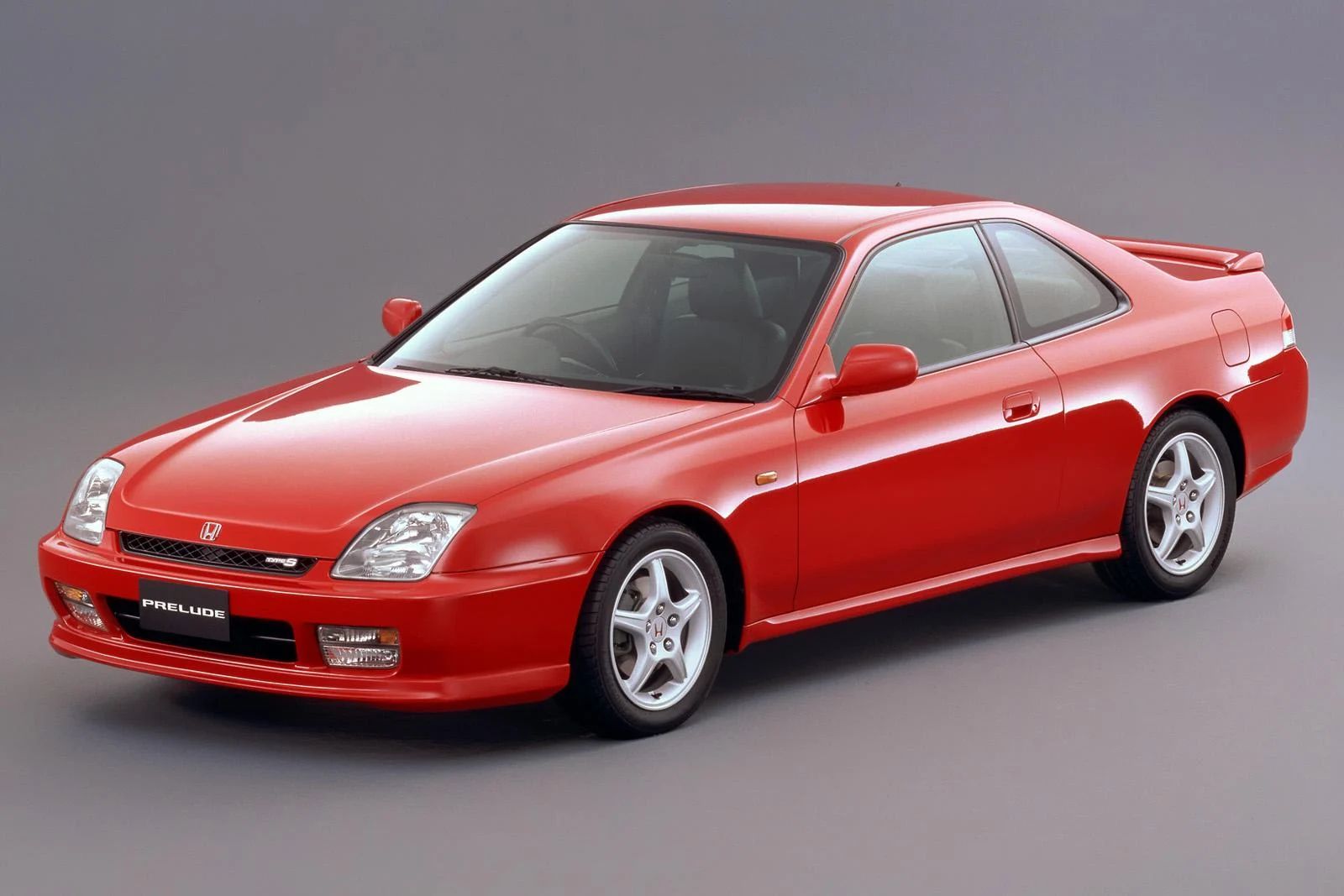
For the discerning driver, there’s an undeniable allure to a manual transmission. It’s more than just a means of getting from point A to point B; it’s a visceral connection to the machine, a dance between driver and drivetrain that offers unparalleled control and engagement. The precise clutch work, the satisfying shift through the gears, the intimate understanding of an engine’s power band – these are the hallmarks of a driving experience that many enthusiasts cherish deeply. Yet, as we survey the landscape of modern rental car fleets, a stark reality emerges: the manual transmission is increasingly rare, a quiet casualty in a world rapidly embracing the convenience of automatics.
This shift isn’t merely anecdotal; it’s a profound transformation reflecting evolving consumer preferences, technological advancements, and the operational priorities of rental companies. For those who still yearn for the tactile pleasure of a stick shift, finding one in a rental car has become akin to a treasure hunt, requiring persistence, knowledge, and often a willingness to explore less conventional avenues. This comprehensive guide is crafted to demystify the search, offering a MotorTrend-level deep dive into why manual transmissions have largely ‘retired’ from mainstream rental lots and, crucially, how you can still secure one for your next adventure.
We’ll dissect the factors contributing to this scarcity, from major rental company strategies to regional driving habits and the inherent challenges that come with offering manual vehicles. Furthermore, we’ll equip you with expert insights on where to direct your search, outlining specific companies and platforms that still champion the manual experience. Prepare to embark on an informed journey that not only explains the ‘why’ behind the vanishing stick shift but also empowers you to keep the manual driving dream alive on the open road.

1. **The Quiet Retirement: Understanding the Manual Transmission’s Fading Presence in Rental Fleets**
The term “quietly retired” aptly describes the current status of manual transmissions within the vast majority of rental car fleets, particularly across North America. This isn’t an overnight disappearance but rather a gradual phasing out, driven by a complex interplay of market forces and shifting consumer demands. What was once a common sight on rental lots now requires diligent searching and often a departure from the usual suspects in the car rental industry.
The reduced availability of manual cars directly impacts the experience of driving enthusiasts and those who simply prefer the engagement of a stick shift. For many, the joy of a road trip is intrinsically linked to the control and dynamic feedback a manual transmission provides, making the quest to find one more than just a practical concern. It represents a desire to maintain a particular kind of driving aesthetic and connection with the vehicle.
This trend toward scarcity is rooted in the overwhelming preference for automatic transmissions among the general driving public. Most drivers today are either unfamiliar with operating a stick shift or simply prefer the effortless nature of an automatic, especially in the often congested traffic conditions of modern urban environments. Rental companies, as businesses, naturally align their inventory with the broadest possible customer base to maximize vehicle utilization and profitability.
The “retirement” then is not an explicit declaration but an observable outcome of these cumulative pressures. It means that the enthusiastic renter must become more strategic and knowledgeable about the rental market, venturing beyond the well-trodden paths to uncover those rare opportunities where a manual transmission still awaits. Understanding this fundamental shift is the first step in successfully navigating the contemporary rental landscape.

2. **The Dominance of the Automatic: Why Rental Companies Prefer Them**The primary reason manual transmissions have become a rarity in rental fleets boils down to simple economics and broad consumer appeal. Automatic transmissions are overwhelmingly preferred by the general driving public. This preference ensures that rental companies can serve a larger segment of their customer base without the potential complications arising from unfamiliarity with manual operation.
For rental agencies, the ease of use offered by automatic transmissions translates directly into a broader customer base. A vehicle that anyone with a driver’s license can operate without specialized skill requirements is a valuable asset. This maximizes the rental potential of each car, minimizing idle time and ensuring a higher return on investment for their extensive vehicle fleets.
Furthermore, the perceived simplicity of automatics minimizes potential issues for both renters and the rental company. Less experienced drivers might struggle with a manual, potentially leading to increased wear and tear on clutches and transmissions, or even accidents. By predominantly stocking automatics, companies mitigate these risks, reducing maintenance costs and avoiding liability concerns associated with driver error.
The cost-effectiveness of focusing on automatic transmissions also influences fleet management decisions. Maintaining a diverse fleet with both transmission types adds operational complexities. This would necessitate specialized training for staff and varying maintenance protocols. A standardized fleet, largely automatic, simplifies logistics and reduces overhead considerably.
In essence, the move towards automatics is a strategic business decision. It aligns with the comfort and convenience expectations of the majority of renters. It also streamlines operational efficiency for the rental company. Ultimately, this contributes to a more profitable and less problematic rental experience from their perspective.

3. **Geographic Divides: Where Manuals Are Common and Where They Are Not**The availability of manual transmission rental cars is not uniform across the globe; it exhibits significant geographical disparities. This variance is deeply rooted in cultural driving habits, historical preferences, and local automotive markets. What might be a rarity in one region can be a commonplace offering in another, fundamentally shaping the expectations of travelers.
Europe stands out as a continent where manual cars are considerably more common, and many drivers there still prefer them. Countries such as Germany, Italy, and France maintain a robust culture of manual driving. The skill is often taught from a young age and is highly valued. Consequently, if you are traveling in Europe, you are far more likely to find manual options readily available. It’s always advisable to ask for one when booking if that’s your preference.
In stark contrast, the United States presents a challenging landscape for manual transmission enthusiasts. Here, automatic cars have become the overwhelming norm, especially within mainstream rental fleets. While some select locations, particularly those offering sports cars or certain compact models, might have manual options, their overall presence is significantly diminished. This reflects the broader American consumer preference for automatics.
Asia also largely leans towards automatic cars as the standard. However, similar to the US, pockets of manual availability can still be found. This is particularly true in the sports car segment in countries like Japan. When planning travel to any new region, it is crucial to research local driving regulations and typical road conditions. This ensures comfort and capability, especially when opting for a manual transmission in an unfamiliar environment.
This regional disparity is a critical piece of information for anyone seeking a manual rental. It underscores the importance of location-specific research. It also highlights that an expectation of manual availability based on one country’s norms may lead to disappointment in another. Understanding these geographic divides is paramount to a successful manual transmission rental quest.
4. **Major Players: The Giants Who Have Largely Said Goodbye to Stick Shifts**When embarking on a quest for a manual transmission rental car, it’s vital to know which major rental companies have, for all intents and purposes, quietly retired them from their U.S. fleets. While they dominate the market with extensive automatic offerings, several prominent names have largely ceased to offer manual options. This makes them less reliable choices for stick-shift enthusiasts.
Our research indicates that companies such as Avis Rent A Car, Dollar Rent A Car, Enterprise Rent-A-Car, Fox Rent A Car, Hertz Rent A Car, National Car Rental, Sixt Rent A Car, and Zipcar typically do not have manual transmission cars available, at least within the United States. This reflects a broader market trend where these large corporations streamline their inventories. They cater to the vast majority of renters who opt for automatics.
This strategic decision by major rental chains is driven by the desire for standardization and efficiency. Managing a fleet primarily composed of one transmission type simplifies procurement, maintenance, and staff training. It allows them to optimize their inventory to align with mass customer preferences. This maximizes vehicle utilization and operational profits across their numerous locations.
While some of these companies, like Enterprise, Hertz, and Sixt, are mentioned in other contexts as potentially having manual options *especially in Europe* or in *sports/performance categories*, it’s critical to note the regional distinction. In their primary U.S. operations, their mainstream fleets are overwhelmingly automatic. This makes a manual rental highly unlikely or entirely unavailable. This can be a source of confusion for renters not aware of these geographic nuances.
Therefore, for those specifically seeking a manual transmission, relying solely on these major rental agencies for a U.S. rental is likely to result in disappointment. Renters must adjust their search strategy, turning their attention towards alternative providers or regions where manual availability is still a cultural or niche market priority. This understanding helps set realistic expectations and directs efforts more effectively.

5. **Age and Experience: Navigating Rental Restrictions for Manual Cars**Renting a manual transmission car often comes with an additional layer of complexity regarding driver age and experience. Rental companies, particularly for vehicles that require more specific driving skills, frequently impose certain restrictions. These are put in place to mitigate risk and ensure the safe operation of their vehicles. These policies can significantly impact who is eligible to rent a coveted stick shift.
A common requirement across most rental companies is a minimum age for renters, typically 21 years old. However, for manual transmissions or certain vehicle classes like sports or luxury cars—which are more likely to be manuals—some companies may extend this to 25 or even 30 years old. This applies to “Super Deluxe Class” vehicles (cars worth over $95,000) or “specialty” vehicles, as noted with Turo.
Furthermore, even if you meet the minimum age, drivers under 25 often face additional surcharges. These “underage” fees can add a significant amount to the daily rental cost, varying by location and company. For instance, Budget charges around $27 per day at most locations for drivers under 25. Rent-a-Wreck applies a surcharge of $25 for drivers aged 19 to 21, and $20 for those aged 22 to 24.
Beyond age, some rental companies may even require proof of experience driving a manual transmission. While not universally enforced, it’s wise to be prepared to demonstrate your skills if asked. This stipulation underscores the companies’ concern for potential drivetrain damage or safety issues arising from inexperienced manual drivers. Such incidents could be costly for both the renter and the business.
Therefore, aspiring manual renters, especially younger drivers, must meticulously review the age restrictions, potential surcharges, and any experience requirements before booking. Being proactive in understanding these policies can prevent unpleasant surprises at the rental counter. It ensures a smoother, more successful acquisition of your desired stick shift vehicle.
6. **The Enthusiast’s Drive: Why Manuals Remain Desirable Despite Scarcity**Despite their dwindling presence in mainstream rental fleets, manual transmission cars continue to hold a significant and enduring appeal for a dedicated segment of drivers. This isn’t merely about nostalgia; it’s about a distinct driving experience that automatics, no matter how advanced, struggle to replicate. The desire for a stick shift is driven by a combination of performance, control, and a more profound connection to the act of driving itself.
One of the most frequently cited reasons for preferring a manual is the enhanced driver engagement it provides. Many drivers appreciate the direct control and the tactile feedback that comes with manually shifting gears. This is particularly true in performance and sports cars. This engagement transforms the mundane commute or spirited drive into an active participation, rather than a passive observation of the vehicle performing its functions.
Beyond the sheer enjoyment, manual vehicles often deliver tangible benefits, such as better fuel efficiency compared to their automatic counterparts. According to a report by Statista, manual vehicles often deliver better fuel efficiency. For budget-conscious drivers or those planning long road trips, this can be a significant economic advantage. The ability to precisely control gear selection allows for optimizing engine RPMs, potentially leading to more economical fuel consumption.
Another practical advantage often associated with manual transmissions is their typically lower maintenance costs due to simpler mechanical designs. While this benefit might be more relevant for car ownership than a short-term rental, it speaks to the inherent robustness and straightforward engineering. This appeals to many automotive enthusiasts who appreciate mechanical integrity.
Ultimately, the continued popularity of manual cars, especially among young drivers aged 18-30, travel enthusiasts, and performance seekers, highlights a niche but passionate market. A survey conducted by the American Car Rental Association (ACRA) revealed that about 15% of renters expressed a preference for manual transmission vehicles. For these individuals, the challenges of finding a manual rental are often outweighed by the desire for a dynamic, connected, and authentically rewarding driving experience that only a stick shift can offer. Their unwavering preference ensures that the demand, though smaller, remains strong.
Navigating the modern rental landscape to secure a manual transmission vehicle requires a blend of savvy, persistence, and an understanding of the less conventional avenues available. While the major players have largely streamlined their fleets toward automatics, a dedicated search can still yield the rewarding experience of a stick shift. This section delves into the strategies and specific resources that can connect you with the manual transmission rental you desire, from innovative peer-to-peer platforms to traditional agencies with niche offerings, alongside crucial booking and financial considerations.

7. **Peer-to-Peer Platforms: Turo’s Role in Finding a Manual**For those determined to find a manual transmission for their next adventure, peer-to-peer rental platforms like Turo have emerged as a game-changer. Unlike traditional rental companies that maintain standardized fleets, Turo operates on a model where individual car owners list their personal vehicles for rent. This fundamental difference means the platform’s inventory is as diverse as the car ownership landscape itself, significantly increasing the chances of finding unique options, including the increasingly elusive manual.
The flexibility inherent in Turo’s model means you can often find a much wider variety of manual cars, from everyday compacts to specialized sports models, depending on your location. The process is straightforward: simply utilize the platform’s intuitive online filters to specify your preference for a manual transmission in your desired area. This direct connection to individual owners often translates into rates that are typically much lower than those offered by conventional rental car companies, presenting both a cost-effective and diverse solution for manual enthusiasts.
It is important for renters to be aware of Turo’s specific policies, particularly regarding age restrictions. For instance, drivers under the age of 30 may face limitations when attempting to rent “Super Deluxe Class” vehicles, which are cars valued at over $95,000, or other “specialty” vehicles that are more likely to feature a manual gearbox. Understanding these nuances before beginning your search ensures a smoother and more successful rental experience, allowing you to focus on the thrill of the drive.
8. **Traditional Agencies Still Offering Manuals: A Closer Look**While many major rental giants have shifted away from manual transmissions, several traditional rental agencies still maintain a presence in this niche market, albeit with varying availability and conditions. These companies, often with a more flexible approach to fleet management or a focus on specific vehicle segments, can be viable options for the diligent manual enthusiast. Their offerings, however, are typically less consistent and more location-dependent than the automatic fleets.
Alamo Rent a Car is one such example, distinguishing itself by listing a variety of manual cars on its site for booking, primarily within its sports, luxury, exotic, and performance car categories. While not as widespread as their automatic offerings, Alamo’s inclusion of manuals, even in specialized segments, signals a recognition of the enthusiast market. Similarly, Budget Car Rental, Thrifty Car Rental, and Payless Car Rental also report varying availability of manual cars, which often depend heavily on the specific rental location. Larger cities, for instance, tend to have a slightly broader selection due to greater demand or a more diverse fleet.
Rent-a-Wreck stands out as a unique option in this landscape, as it specializes in renting out used cars. This business model inherently increases the likelihood of finding manual transmission vehicles in their inventory, simply because older models are more likely to be equipped with a stick shift. For those willing to forgo the newest models in favor of a manual driving experience, Rent-a-Wreck can be a valuable resource. It’s crucial, however, to verify availability directly with these companies and at specific locations, as their manual stock can fluctuate significantly.

9. **Master the Search: Essential Booking Tips for Manuals**Successfully securing a manual transmission rental car often hinges on strategic planning and meticulous execution of your booking process. Given their scarcity, a proactive approach is not just advisable, but often essential to avoid disappointment. These practical tips are designed to maximize your chances of connecting with the stick shift you desire, ensuring your rental experience is as engaging as possible.
Foremost among these tips is the importance of booking early. Manual cars, particularly in popular tourist destinations or during peak travel seasons, can be in high demand among the niche market of enthusiasts. Making your reservation well in advance significantly increases the likelihood that a manual vehicle will be available for your chosen dates. Procrastination in this specific context can often lead to a purely automatic outcome.
When initiating your booking, whether online or over the phone, it is absolutely critical to clearly and explicitly specify your preference for a manual transmission. While some rental websites offer a filter option to search by transmission type, it’s always a good practice to double-check and confirm verbally if speaking with a representative. Ambiguity can lead to an automatic assignment upon arrival, so leave no room for misunderstanding about your desired gearbox.
Finally, embracing flexibility can be a powerful asset in your manual transmission quest. If your initial search for a specific manual model proves fruitless, be open to exploring alternatives. A different make or model, or even a slight adjustment to your pick-up location or dates, might unlock a suitable manual option. This adaptability can transform a challenging search into a successful discovery, leading you to an unexpected but equally rewarding manual driving experience.
The landscape for manual transmission rentals, while undeniably challenging, is far from desolate for the dedicated enthusiast. From innovative peer-to-peer platforms to select traditional agencies and specialized services, avenues exist for those who seek the rewarding engagement of a stick shift. By leveraging booking tips, meticulously navigating financial and insurance considerations, and understanding the statistical trends that shape availability, renters can confidently pursue and secure their desired manual transmission vehicle. The journey may require more effort than simply clicking ‘automatic,’ but for those who truly appreciate the art of driving, the reward of a manual transmission behind the wheel is a joy worth seeking, ensuring the spirit of the stick shift continues to thrive on roads less traveled.






